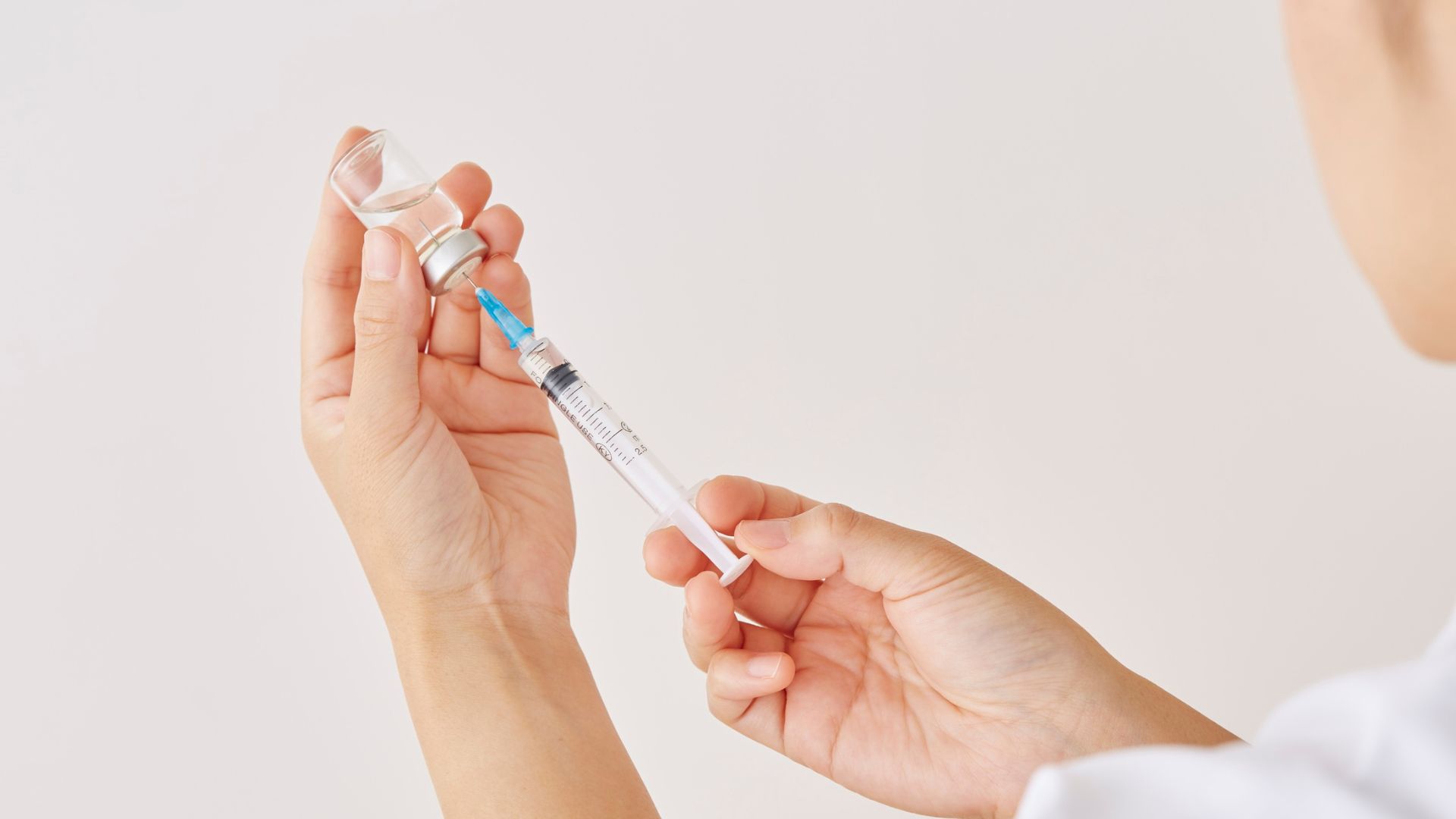Micro needling is a popular skincare treatment that boosts collagen production, reduces fine lines, and improves skin texture. To prepare for the best results, consult a dermatologist or licensed aesthetician, avoid sun exposure for two weeks prior, discontinue retinoids, AHAs, BHAs, and exfoliants a week before, keep skin hydrated with a gentle moisturizer, avoid anti-inflammatory medications a few days before, and cleanse your face and skip makeup on the day of the treatment. Proper preparation ensures optimal results and minimizes side effects, leading to a rejuvenated complexion.
Consulting a Dermatologist Before Micro Needling

Micro needling, also known as collagen induction therapy, is a cosmetic procedure that can address various skin concerns, including fine lines, acne scars, and uneven skin tone. Consulting a dermatologist before undergoing this treatment is crucial, especially for individuals with specific skin conditions or concerns.
Evaluating Skin Concerns
A dermatologist will assess your skin to determine the suitability of the microneedling procedure for your specific concerns, such as acne scarring, surgical scars, and atrophic acne scars. They will evaluate the condition of your skin, particularly if you have darker skin tones or sensitive skin, to prevent adverse effects and ensure optimal outcomes.
Personalized Treatment Plan
During the consultation, your dermatologist may discuss incorporating platelet-rich plasma (PRP) with your microneedling treatment to enhance the results. PRP can further stimulate collagen production and accelerate the skin's healing process, making it effective for skin rejuvenation and treating post-acne scarring.
Skin Preparation Advice
Your dermatologist will provide tailored advice on how to prepare your skin for the microneedling procedure. This may include guidance on discontinuing certain skincare products, addressing any underlying skin issues, and ensuring your skin remains adequately hydrated and protected from sun exposure.
Monitoring Potential Risks
Consulting a dermatologist ensures that any potential risks associated with microneedling, such as irritation or infection, are minimized. They can offer expert advice on what to expect during and after the treatment, guiding you on how to care for your skin during the recovery period to maintain skin elasticity and mitigate any side effects.
Special Considerations
For individuals dealing with aging skin, stretch marks, enlarged pores, and various other skin concerns, a dermatologist's expertise can be invaluable. They can tailor the microneedling procedure to address these specific issues, boosting the effectiveness of the treatment and ensuring the best possible results for skin rejuvenation and, in some cases, even promoting hair growth.
Consulting a dermatologist before a microneedling procedure is essential for assessing skin concerns, personalizing your treatment plan, preparing your skin, and monitoring potential risks. This expert guidance helps achieve the best possible outcomes, ensuring that the microneedling treatment effectively addresses your unique skin conditions and concerns.
The Importance of Professional Advice for Micro Needling

Expertise at the Dermatologist's Office
When considering microneedling, seeking professional advice at a dermatologist's office is essential. Dermatologists have the knowledge and experience to assess your specific skin concerns and determine whether skin needling is the appropriate treatment for you. They can also compare it to other cosmetic treatments like laser treatments or chemical peels to recommend the best solution for your skin condition.
Minimally Invasive Cosmetic Treatments
Microneedling is a minimally invasive procedure that involves creating tiny holes in the skin using a microneedling device. This process stimulates the body to produce more collagen, which improves skin texture and elasticity. A board-certified dermatologist ensures the proper use of these devices and can combine microneedling therapy with other treatments to target issues like dark spots, sagging skin, and more.
Personalized Treatment Plans
A dermatologist can develop a personalized treatment plan that may include using a topical anesthetic or numbing cream to minimize discomfort during the procedure. They assess your skin's pigmentation and other characteristics to tailor the microneedling therapy to your needs, ensuring the best outcomes with minimal risks. This is particularly important for individuals with sensitive or darker skin types.
Monitoring Multiple Treatments
Some skin concerns may require multiple microneedling sessions for optimal results. A dermatologist can monitor the progress of your treatments, adjusting the approach as needed. Conditions like acne scars, large pores, and even androgenic alopecia can benefit from the controlled, microscopic punctures made by the microneedling device, promoting new collagen growth and a more youthful appearance.
Safety and Efficacy
Performing microneedling under the guidance of a professional ensures safety and efficacy. Dermatologists are trained to handle microneedling devices, reducing the risk of complications such as infections or improper healing. Unlike at-home microneedling, procedures performed by experienced hands offer peace of mind and better outcomes.
Advanced Techniques and Additional Benefits
Experienced dermatologists can employ advanced techniques, such as combining microneedling with platelet-rich plasma (PRP) or using automated microneedling devices to enhance the treatment's effectiveness. These methods can be particularly beneficial for treating issues like hair loss, specifically androgenic alopecia, where more collagen and new tissue growth are needed.
Very Little Downtime
One of the advantages of microneedling is that it requires very little downtime compared to more invasive procedures. Under professional supervision, post-treatment care is thoroughly explained to ensure a smooth recovery. Guidelines on how to care for the skin after treatment help minimize any potential side effects and maintain the results.
Considerations for All Skin Types
A board-certified dermatologist will take into account your skin type and make specific recommendations to optimize the microneedling results. This includes advice on skincare products to use before and after the treatment, such as sunscreens and moisturizers, to protect the skin's outermost layer, the stratum corneum.
The Value of Professional Guidance
Overall, professional guidance in microneedling is invaluable. The expertise provided in a dermatologist's office ensures that the procedure not only addresses specific skin concerns effectively but also does so safely and efficiently. Consulting with an expert guarantees that your microneedling sessions will be tailored to your needs, leading to improved skin health and appearance, whether you're dealing with cosmetic concerns like large pores or medical conditions like androgenic alopecia.
Understanding Your Skin Type and Micro Needling

Assessing Your Skin Type
Before undergoing a microneedling treatment, it's crucial to understand your skin type. Different skin types react differently to microneedling, and knowing yours helps in tailoring the procedure to achieve the best possible results. An objective evaluation by a dermatologist can help determine whether microneedling is appropriate for you and how to customize the treatment.
How Microneedling Works
Microneedling involves creating tiny punctures in the skin using fine needles to stimulate collagen production. This process improves skin texture and reduces the appearance of other scars and blemishes. Different needle lengths are used depending on the treatment area and the specific skin concerns being addressed.
Does Microneedling Hurt?
One of the common questions is whether microneedling hurts. While some discomfort can be expected, a dermatologist can use a topical anesthetic to minimize pain. The procedure is usually well-tolerated, and any discomfort typically subsides within a few hours post-treatment.
DIY Microneedling vs. Doctor's Office
Though DIY microneedling kits are available, performing microneedling at home carries risks such as infection and improper technique. For the safest and most effective treatment, it's best to visit a doctor's office. Professional microneedling ensures the correct needle lengths are used and that the procedure is conducted under sterile conditions.
Radiofrequency Microneedling
For enhanced results, radiofrequency microneedling can be considered. This advanced technique combines microneedling with radiofrequency energy to further stimulate collagen production and tighten skin. It's particularly effective for treating deeper scars and more significant skin concerns, often resulting in minimal downtime and quicker recovery.
Customizing the Treatment
A personalized treatment plan is essential for achieving the best results with minimal risks. Dermatologists can assess your skin's needs and determine the appropriate needle lengths and techniques to use. They can also advise on post-treatment care to ensure the treated area heals properly and maintains its new, improved appearance.
Minimal Downtime
One of the key benefits of microneedling is that it involves minimal downtime. Most patients can return to their regular activities within a few hours of the procedure. This lack of significant downtime makes microneedling an attractive option for those looking to improve their skin with minimal disruption to their daily life.
Achieving the Same Results
While DIY microneedling might seem convenient, achieving the same results as a professional treatment is unlikely. The expertise offered in a doctor's office ensures the procedure is done correctly, targeting your specific skin concerns effectively and safely. This professional approach significantly reduces risks and optimizes results.
Understanding your skin type and having a professional perform microneedling under expert supervision is critical to achieving the best outcomes. Whether addressing scar reduction, rejuvenating skin, or exploring advanced techniques like radiofrequency microneedling, consulting a dermatologist ensures a safe, effective, and tailored treatment plan.
Avoiding Sun Exposure: Pre-Micro Needling Tips

The Importance of Sun Protection
Before undergoing microneedling, it's crucial to protect your skin from sun exposure. UV rays can damage the skin and exacerbate any existing skin concerns, making it harder for your skin to respond effectively to the treatment. Whether you're aiming to treat acne scars or reduce the appearance of stretch marks, proper sun protection is key to optimal results.
Prepping Your Skin
Preparing your skin for microneedling involves more than just avoiding the sun. Specialists often recommend using products to fortify your skin’s barrier. Ensuring your skin is in its best condition will allow it to better handle the tiny needles used in percutaneous collagen induction therapy. This preparation can include hydrating serums and sunscreens with high SPF to shield your skin from UV damage.
Sunscreen for Pre-Treatment Care
Using a broad-spectrum sunscreen with at least SPF 30 is essential in the days leading up to your microneedling appointment. This will help protect the outermost layer of your skin, the stratum corneum, ensuring it's healthy and ready for treatment. Remember, protecting your skin helps your body respond better to the procedure and can significantly enhance the results.
Avoiding Tanning and Sun Exposure
It's advisable to avoid tanning salons and prolonged sun exposure for at least two weeks before microneedling. UV exposure can induce skin irritation and inflammation, complicating the treatment process and potentially affecting outcomes. Whether you're addressing stretch marks or other skin concerns, minimizing sun exposure ensures the skin's integrity is maintained before it undergoes microneedling with tiny needles.
Post-Sun Exposure Care
If you happen to get some sun exposure unintentionally, ensure you use soothing products like aloe vera gel to mitigate any potential effects. This can help reduce inflammation and keep your skin calm, ensuring it remains receptive to microneedling.
These pre-microneedling tips emphasize the importance of proper sun protection and skin preparation to ensure the best results. Protecting your skin from UV damage not only improves the effectiveness of microneedling but also ensures a smoother and safer treatment process.
How Sun Exposure Affects Micro Needling Results

Increased Risk of Hyperpigmentation
Sun exposure before or after microneedling can significantly increase the risk of hyperpigmentation. This is because UV rays can stimulate melanin production in the skin, leading to dark spots or uneven skin tone, especially when the skin is healing from the microneedling procedure. Patients may find that instead of alleviating their skin issues, sun exposure exacerbates them.
Delayed Healing Process
Exposure to the sun can slow down the skin’s natural healing process post-microneedling. UV rays can cause additional stress and damage to the treated skin, making it more challenging for the cells to repair efficiently. This delay in healing can negatively impact the treatment results, causing prolonged redness, swelling, and discomfort.
Compromised Skin Integrity
Sun exposure can weaken your skin's barrier, making it more susceptible to irritation, infection, and other complications. Since microneedling already creates micro-injuries to stimulate collagen production, any additional damage from UV rays can compromise the skin's integrity, leading to suboptimal results and increased risk of complications.
Reduced Efficacy of Active Ingredients
Post-microneedling, many skincare products and active ingredients are used to enhance results and boost the skin’s recovery. However, sun exposure can degrade these active ingredients, reducing their effectiveness. For instance, ingredients like vitamin C and retinoids can break down rapidly under UV light, limiting their benefits.
Recommendations for Sun Exposure
To mitigate these risks, it is recommended to avoid direct sun exposure for at least two weeks before and after the microneedling procedure. Wearing a broad-spectrum sunscreen, hats, and protective clothing can help shield your skin from harmful UV rays. Additionally, seeking treatments during seasons with less intense sunlight can further protect your skin and ensure the best outcomes from microneedling.
Discontinuing Retinoids and Exfoliants Before Micro Needling

Why Discontinue Retinoids and Exfoliants?
Before undergoing a microneedling treatment, it's essential to pause the use of retinoids and exfoliants. These products, while beneficial for the skin in many ways, can significantly increase skin sensitivity and the risk of irritation during microneedling. To ensure a safe and effective procedure, dermatologists commonly advise patients to stop using these products one to two weeks before their microneedling session.
Effects of Retinoids on the Skin
Retinoids, which include products like retinol and tretinoin, are known for their powerful anti-aging and acne-fighting benefits. They accelerate cell turnover and help reduce the appearance of fine lines, wrinkles, and hyperpigmentation. However, retinoids also make the skin more vulnerable to external factors, including the micro-injuries caused by microneedling. Halting their use allows your skin to build up resilience, reducing the likelihood of excessive redness and irritation post-treatment.
Impact of Exfoliants
Exfoliants, both physical and chemical, work to remove dead skin cells from the surface of your skin, promoting clarity and smoothness. Despite their benefits, exfoliants can weaken the skin’s barrier if used too close to your microneedling appointment. This weakening can make your skin more susceptible to pain, swelling, and prolonged recovery. To prepare your skin adequately, avoid exfoliant products containing AHAs, BHAs, or physical scrubs at least one week before treatment.
Recommendations for Discontinuation
To optimize the results of your microneedling procedure, follow these general recommendations for discontinuing retinoids and exfoliants:
- Stop retinoids: At least one to two weeks before your microneedling session.
- Pause exfoliants: At least one week before treatment to allow your skin to stabilize.
- Consultation: Always discuss your current skincare routine with your dermatologist, who can provide personalized guidelines based on your specific skin type and concerns.
- Alternative Products: Use gentle, hydrating skincare products in the interim to support your skin's health and barrier function.
Discontinuing these products in advance allows your skin to be in the best possible condition for microneedling, ensuring a safer process and enhancing the overall benefits of the treatment.
Safe Skincare Practices in Preparation for Micro Needling

Gentle Cleansing
In the weeks leading up to your microneedling treatment, it is crucial to switch to a gentle cleanser that does not strip your skin of its natural oils. Look for a sulfate-free formula that hydrates while removing dirt and impurities. Avoid products with harsh chemicals or strong fragrances, as they can increase skin sensitivity and cause irritation.
Hydration is Key
Keeping your skin well-hydrated is essential for a smooth and effective microneedling procedure. Use moisturizers that contain ingredients like hyaluronic acid, glycerin, and ceramides to lock in moisture and strengthen the skin barrier. Hydrated skin is more resilient and responds better to the micro-injuries created during microneedling.
Sun Protection
As previously discussed, protecting your skin from UV exposure is vital. Apply a broad-spectrum sunscreen with at least SPF 30 every morning and reapply throughout the day, especially if you are outdoors. This helps prevent UV-induced hyperpigmentation and allows your skin to heal properly after the treatment.
Avoid New Skincare Products
Introducing new skincare products close to your microneedling session can risk unexpected reactions or sensitivity. Stick to a simple, consistent skincare routine in the weeks leading up to your appointment. If you need to try a new product, do so at least a month in advance to monitor how your skin responds.
Nutritional Support
Your skin’s health is also influenced by your diet. Eating a balanced diet rich in vitamins, minerals, and antioxidants can help support your skin’s natural healing processes. Foods high in vitamin C, vitamin E, and omega-3 fatty acids are particularly beneficial. Staying hydrated by drinking plenty of water is equally important.
Consultation with a Dermatologist
Before any microneedling session, it’s essential to have a detailed consultation with your dermatologist. Discuss your current skincare routine, any medications you are taking, and your overall skin health. Your dermatologist can provide tailored advice and recommend adjustments to your skincare routine to ensure optimal results.
Following these safe skincare practices before microneedling can help minimize the risk of complications and enhance the efficacy of the treatment, resulting in smoother, more radiant skin.
Ready for Your Microneedling Session?

At Oceanside Medical, we are committed to providing you with the highest quality skincare treatments tailored to your unique needs. Our experienced dermatologists are available to guide you through the process and answer any questions you may have about microneedling or other procedures.
Contact us today to schedule your consultation and take the first step towards radiant, healthier skin. We look forward to helping you achieve your skincare goals!














